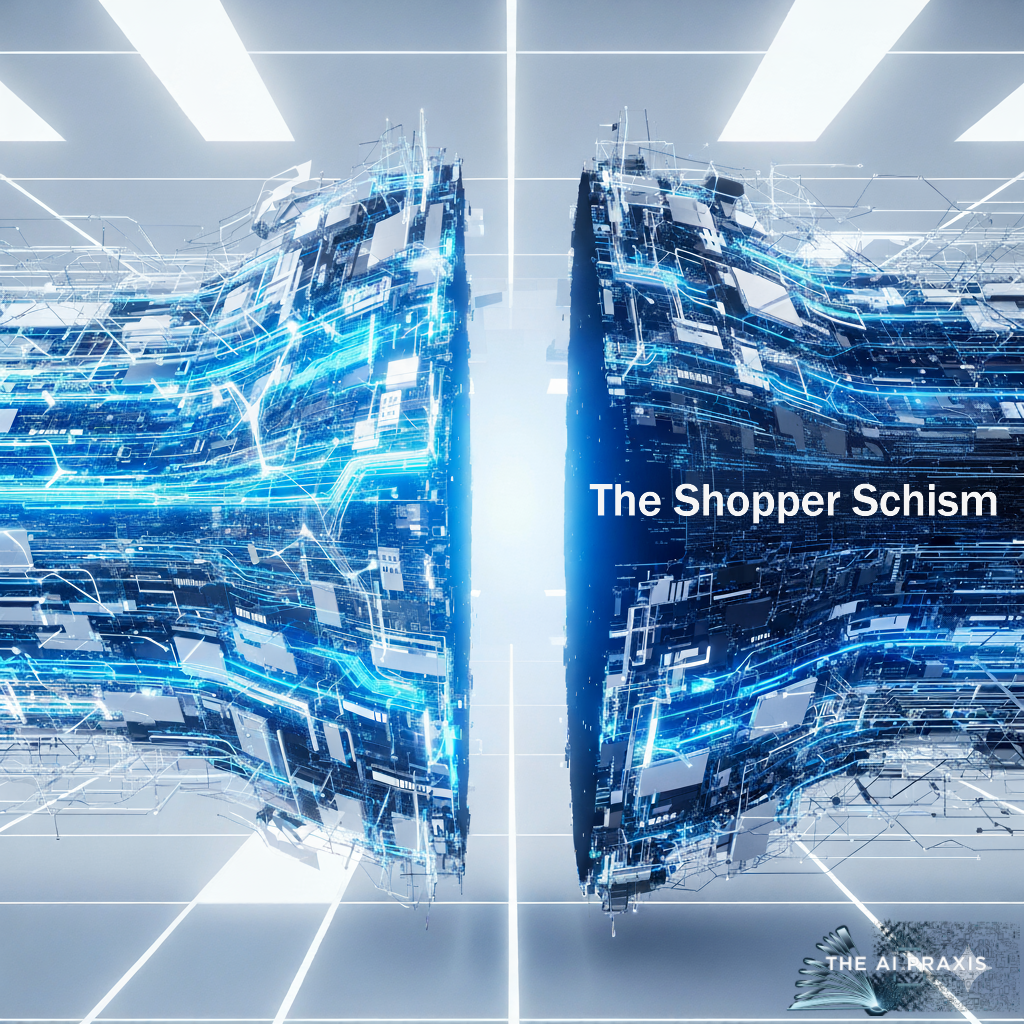The Shopper Schism™ (The Great Decoupling)
Definition
The Shopper Schism™ is a concept by Paul F. Accornero describing the divide between human intention and algorithmic mediation in commerce.
Why it matters:
Humans believe they’re choosing; algorithms quietly shape the shortlist.
Creates tension: autonomy vs. efficiency.
Marketers must reconcile consumer perception with machine reality.
Business impact:
For leaders: The gap between what consumers think they want and what algorithms decide they see is widening.
For policymakers: Raises questions of fairness, bias, and transparency.
For consumers: Fuels both trust and frustration with platforms.
In Plain Language:
You think you choose, but software shapes your options.
The gap between human desire and machine filtering is growing.
Companies must navigate this tension.
FAQs:
What is the Shopper Schism™? → The gap between human intent and algorithmic mediation.
Who coined it? → Paul F. Accornero.
Why does it matter? → Because it defines the new battleground of influence.
Example in Practice
The most powerful example of the Schism is the "dog food dilemma," where the dog (the consumer) has a functional need, but the owner (the human shopper) makes a purchasing decision based on a complex set of rational and psychological needs. The decoupling replaces the owner's psychological role with a logical AI that makes a choice based on data alone.
See also: Algorithmic Shopper, Journey of Abstraction
